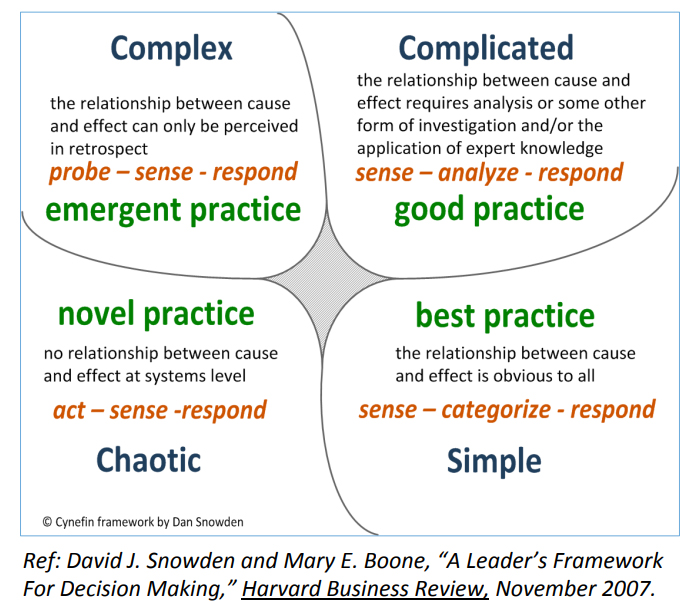This is the first in a series of three blog posts about systems engineering for rapid innovation in a hyper-dynamic world. This post introduces the subject and discusses it within the context of the system of interest and the enterprise system. The second post discusses how to address each of the three systems—the system-of-interest, the enterprise system, and the external system—from the standpoint of rapid innovation. The final post concludes with recommendations on how the systems engineer can proceed in such an environment.
Overcoming Stereotypes, Tailoring Approaches, and Delivering Value while Managing Risk
Technology-centric companies that push the edge of the possible demand rapid innovation. Large, established organizations understand that it’s necessary to maintain or expand their market position; smaller startups look to create disruption through the introduction of cheaper, better, or more innovative products or services with the objective of becoming the market leader. From either vantage point, rapid innovation is imperative in the battle for market share and growth.
Unfortunately, systems engineering, in its traditional forms, is often perceived as being at odds with a culture and environment that embraces rapid innovation. Complaints can range from it being too rigidly adherent to process, to being too slow to deliver value to a team that is agile and nimble in their exploration of ideas and solutions. These perceptions can be overcome if organizations are willing to adapt and apply tailored, right-sized systems engineering implementations, taking advantage of agile, “probe-sense-respond” and “build-test-fix” type approaches within an enterprise culture where taking acceptable risks is encouraged.
The successful implementation of a tailored systems engineering program within a rapid innovation environment must consider the three systems: the system-of-interest, the environmental system (the system in which the system-of-interest operates), and the enabling system (the enterprise). For more information on the three systems, see The Forgotten System. The implementation must be tailored based on the conditions present in each of these three critical systems.
System of Interest – What Type of Problem are You Trying to Solve?
Before one can come up with an approach to tailoring systems engineering best practices for application within a rapid innovation environment, we must first assess and evaluate the types of problems we’re trying to solve. Knowing the class of problem we’re trying to solve helps inform us as to the approach that is best suited to address it. One such means of classifying the problem space is the Cynefin Framework developed by Dan Snowden (Figure 1).

Figure 1: Cynefin Framework
Most of the problems that we work to solve as engineers fall into either the complicated or complex domains. In the complicated domain, there are known relationships between cause and effect, although they may require detailed evaluation and study. In this domain, a sense-analyze-respond approach works well. Many legacy systems from decades past fall into this category. However, more and more, we are working on problems in the complex domain where the relationship between cause and effect can only be accurately determined in retrospect.
These systems may encapsulate so much electromechanical and software complexity that it is unrealistic to expect all internal interfaces and exchanges to be captured and understood with high enough fidelity to understand all the emergent behavior ahead of fielding a system.
Other systems that fall into this category are those that include humans within the system boundary, or rely heavily upon human interaction at the external interface boundary. In all cases where humans are involved, the systems fall within the complex domain, as humans do not always act predictably or even rationally, and so designers cannot accurately anticipate all of their interactions with the system. In any case, complex systems require a probe-sense-respond model for developing an understanding of the as-built behavior.
For the purposes of this blog series, we will focus on systems that fall within the complex domain, as that is the most common category today.
Enterprise System – The New World Order of Infinite Games
We now live in a world that looks and operates much differently than the one of the past century—more tolerant of the traditional slower, methodical, linear product development methodology. We can think about the differences between now and then not just in terms of speed, but also strategy and the “game” that our businesses are playing.
Business consultant Simon Sinek defines the difference between finite games (like sports) and infinite games like business or politics. In infinite games, the players come and go, the rules can change, and there is no defined endpoint. There are no winners and losers in infinite games—there are only the states of ahead and behind. To truly lead in a rapid innovation environment, we must embrace the “infinite game” mindset.
Sinek contends that to succeed at playing the infinite game, four things must be present:
1) Just Cause
2) Courageous Leadership
3) Trusting Teams
4) Worthy Rival
Just Cause speaks to why your organization exists. It is a cause that is so just that people would be willing to sacrifice to see the cause through. If you’re working at an organization that inspires you, that you enjoy working for, we can assume that you believe they have a just cause.
Courageous leaders are willing to sacrifice the short term for the long term. They profoundly believe in the just cause. Systems engineers are well placed to act as courageous leaders, as we understand the benefit of doing certain things right early for the long-term payoff. It helps to have others within your organization who act as courageous leaders as well.
Trusting teams develop when individuals feel comfortable asking for help. They don’t fear retribution for showing vulnerability. There cannot not be too much bureaucracy within the organization either. Trusting teams also exhibit emergent behavior; they are able to be more creative and develop systems quicker than a collective set of equally competent individuals.
Lastly, we must have worthy adversaries. These are competitors that expose our weaknesses and show us where we have to work harder. We should identify our worthy adversaries and assess their state periodically.
A challenge systems engineers will face here is that many managers (and notice I didn’t say “leaders”) within organizations and enterprises do not know which game they are even playing. Issues arise when an organization thinks they are playing a finite game and are competing against organizations that know they are playing an infinite game. The nimble systems engineer can speak up and become that voice of clarity and reason in these cases.
To learn more about how systems engineering can help you and your enterprise navigate a complex world, check out this page on STRATA methodology—a layered approach to success.





